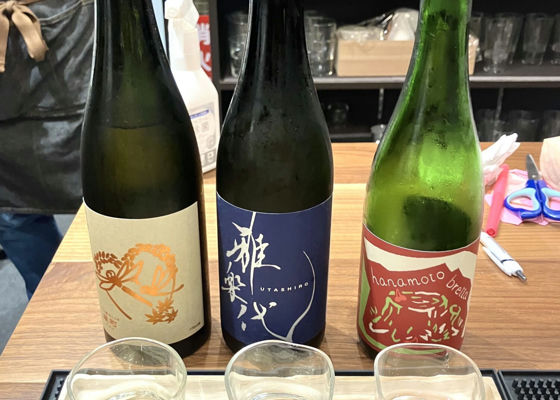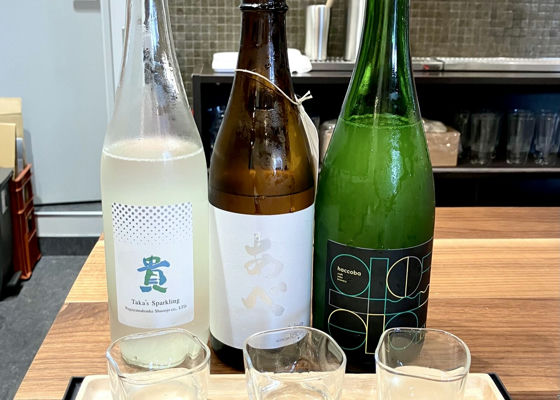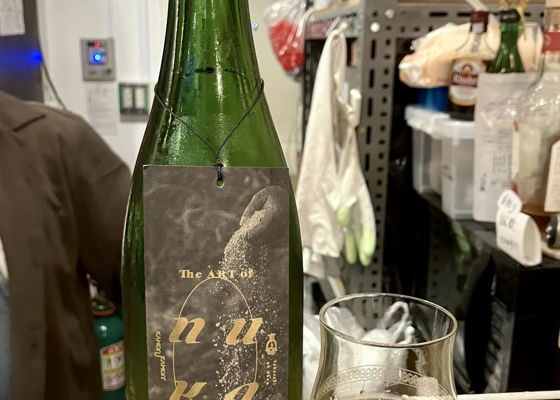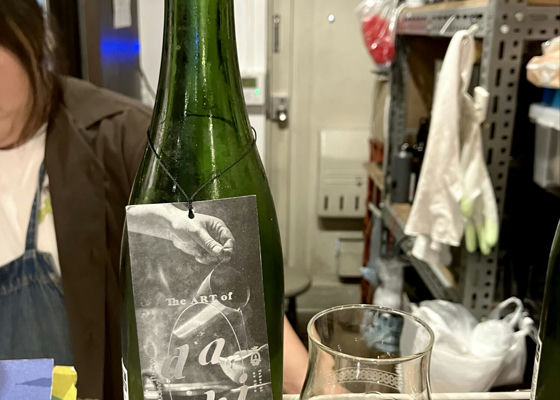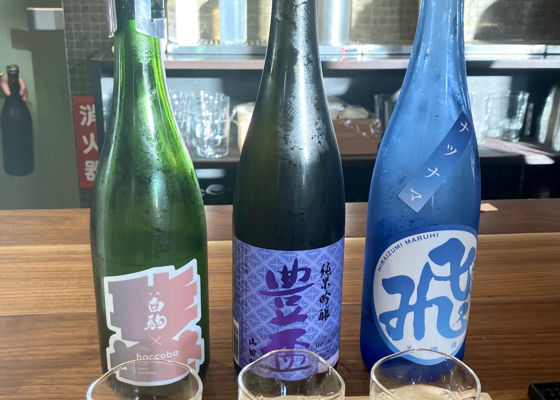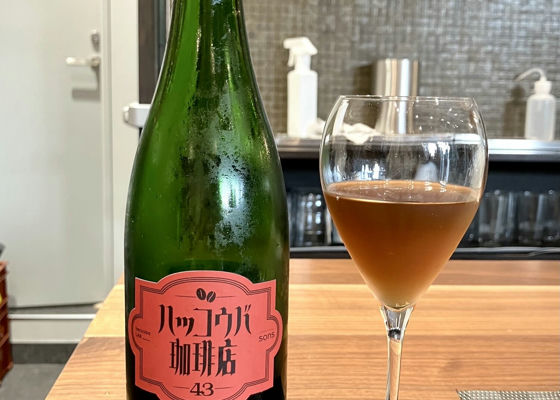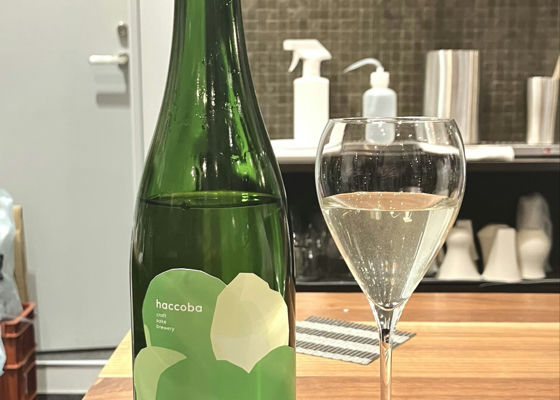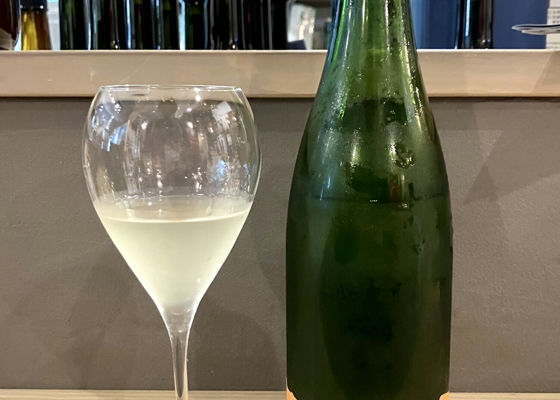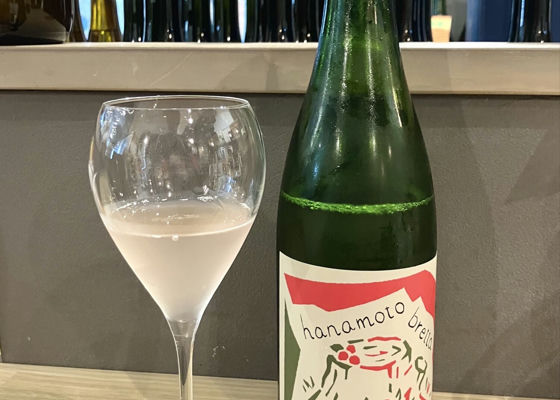Timeline
K(Right photo)
I guess I'm gradually getting used to craft saké, so there's nothing particularly new or impressive about it...
Delicious, but
The acidity and the heaviness that may have come from the rice are a little too strong...
I'm not sure if the level is a little too high for me to understand the wildness...
4.25 K(Right photo)
The contents are kasu [sansho lamonade], which I drank before.
It has a little more umami and less sweetness than the first batch, but it is still delicious!
But I think my favorite was the first batch, though it may be due to the time of year.
I'm glad to see this direction, because at this size and price, it's just about within reach for home drinking.
4.25 KThis sake is also very typical of ordinary craft saké when served cold, but when warmed up, the umami flavor comes out in a flash!
The secondary ingredients are more obvious than the soup stock, and the bran and roasted aroma is well complemented by the sweet and tasty acidity.
As I said, this sake is too amazing to follow!
4.75 KIn cold sake, the harmony of sweetness, flavor, and acidity is juicy and typical of haccoba. No sense of secondary ingredients.
Warmed up, the sweetness and umami spread, but it is still difficult to feel the secondary ingredients.
The scallops, shiitake mushrooms, and kelp are really something...
It's a high-level sake in many ways!
4.50 K(Left photo)
A fairly sweet sake, but with a hint of spice in the back.
I don't like pakuchi, but it is not at all unpleasant, but rather adds a nice accent to the sweet and tasty acidity of the sake.
There is a salty taste, or rather a mineral taste like sea salt.
I would like to drink this sake without knowing any prior information.
Very interesting!
4.50 K(Re-check-in for re-compilation)
This is a sweet coffee.
It smells like coffee.
Tastes like coffee with a lot of syrup
It's sweet from the beginning to the middle.
The aftertaste is more coffee bitterness than umami.
The sake-like taste is the least I've ever tasted in Hakkouba.
Delicious, but Kahlua would be better.
4.50 K(Re-check-in for re-compilation)
This is a microcarbonated lemon sour.
But it's interesting that it doesn't lack the sake flavor.
The chili sensation that lingers on the tongue is more like sansho than a fizzy sensation.
Anyway, it's refreshing, but you feel like you've had it, and you can enjoy it forever!
It would be great if it were a little cheaper, but hey!
4.75 K(Re-check-in for re-compilation)
(I haven't been drinking that much so far)
The most shocking craft saké ever!
Even though I could taste the rice flavor that is typical of sake, the acidity (plus a fair amount of sweetness) was different from the acidity of sake, and then there was an astringent aftertaste.
Sake and wine go well together, I thought.
The light pink color of the red wine is also beautiful. The light pink color of the red wine is also beautiful!
5.00 K(Re-check-in for re-compilation)
Lemon-like acidity is the predominant taste, and the sweetness seems to be drowned out.
There is a certain amount of fizziness, so much so that if you were told it was a tonic soda, you would think it was, but maybe because you are drunk?
Hopiness is present from the middle to the end (especially on the back end), and is much less pronounced than in Hanafu.
Seriously, it's like a juice.
It's the same 13% as Shinsei and Koshinohomare Qn Namato... scary!
4.75 K(Re-check-in for re-compilation)
The aroma is mild.
The sweetness in the mouth is dense, as if it were a sugar cube...
There is a slight sourness, but it is not so much fruitiness.
The umami is quite rich, and if I had to use a strong analogy, I would say banana...
The pleasant astringency (and slight bitterness) in the aftertaste may be derived from the raw materials or from the low-pasteurization...
It is complex. I feel that this sake is still too sophisticated for me to understand.
5.00 K(Re-check-in for re-compilation)
First impression is raspberry sour
The bubbles are strong.
The aroma and the entrance are just like that.
The umami taste you feel in the middle is the rice flavor.
The aftertaste is refreshing and light, again like a sour.
I didn't know that berries and sake go so well together!
I feel a new world!
4.75 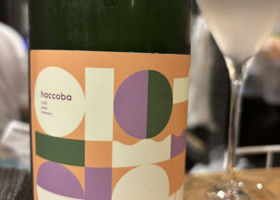
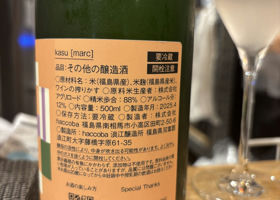
manaThis is the second in the "kasu" series.
This drink, made from wine pomace, gives a more subdued impression than the "lemonade.
The color is a little deeper and the aroma is mellow.
It has a slightly adult atmosphere, with a slight aroma of red grapes and cherries.
In the mouth, there is a gentle sweetness of rice.
The wine-derived acidity and a slight astringency combine to give it a deep flavor.
The "wine aspect" and the "warmth of sake" are mixed together just right,
It is not one or the other, but a strange and pleasant balance.
The "sansho lemonade," with its bright burst of cardamom and sansho (Japanese pepper), is a perfect match for the "sansho" wine.
If "sansho lemonade" is like "morning light" that refreshes you with its aroma of spice and lemon, "marc" is like the evening glow of dusk,
marc" is a "quiet aftertaste" that makes you want to sip it quietly on the terrace at dusk.
It is interesting to note that even the same "kasu" has a completely different character.
It is hard to believe that both were created from "materials that were originally discarded,
They were both full of discovery and deliciousness that is typical of haccoba. RecommendedContentsSectionView.title
